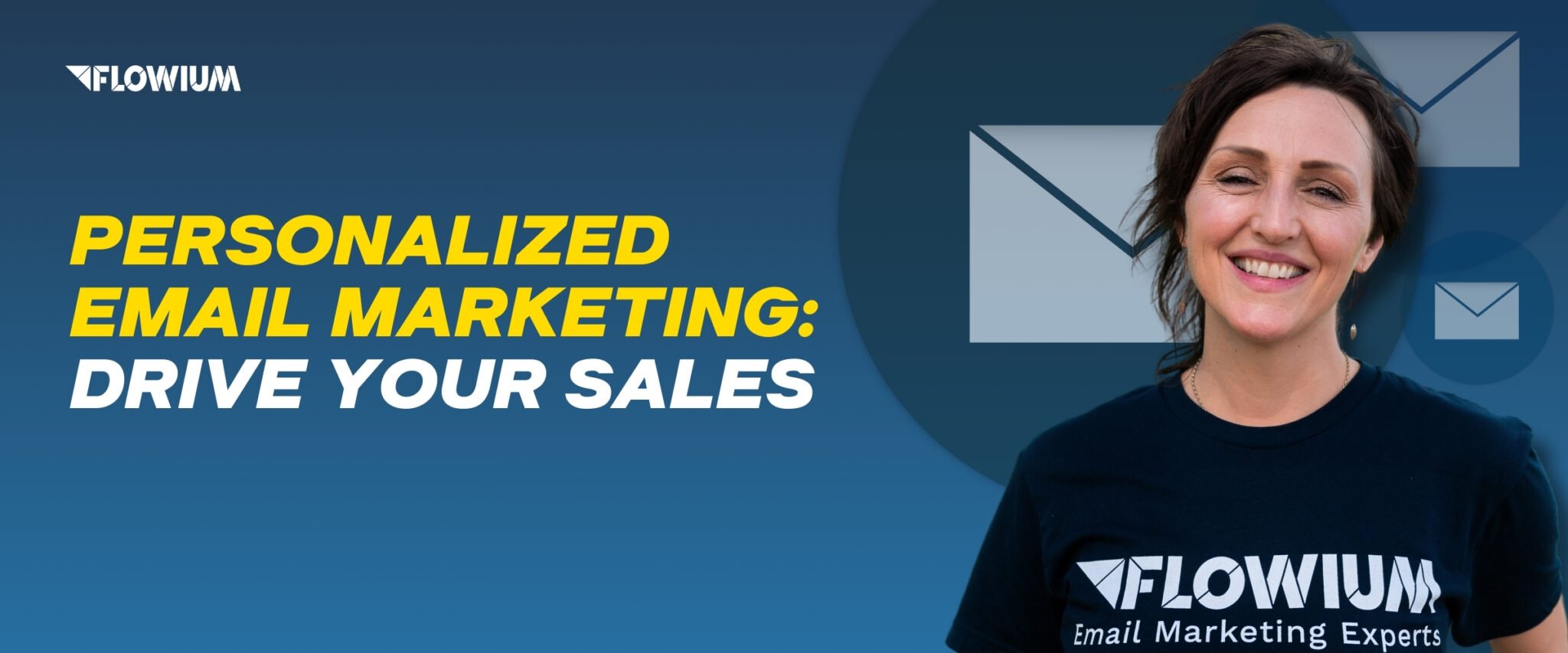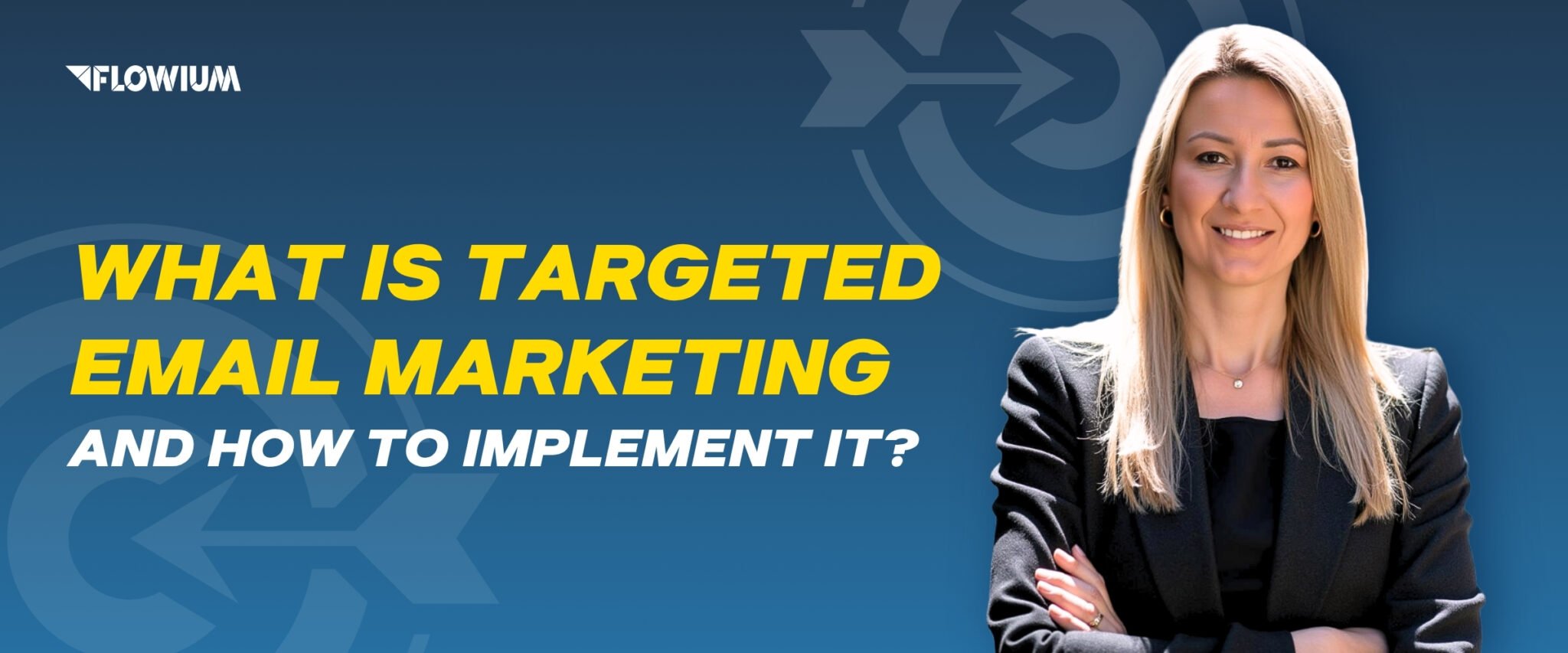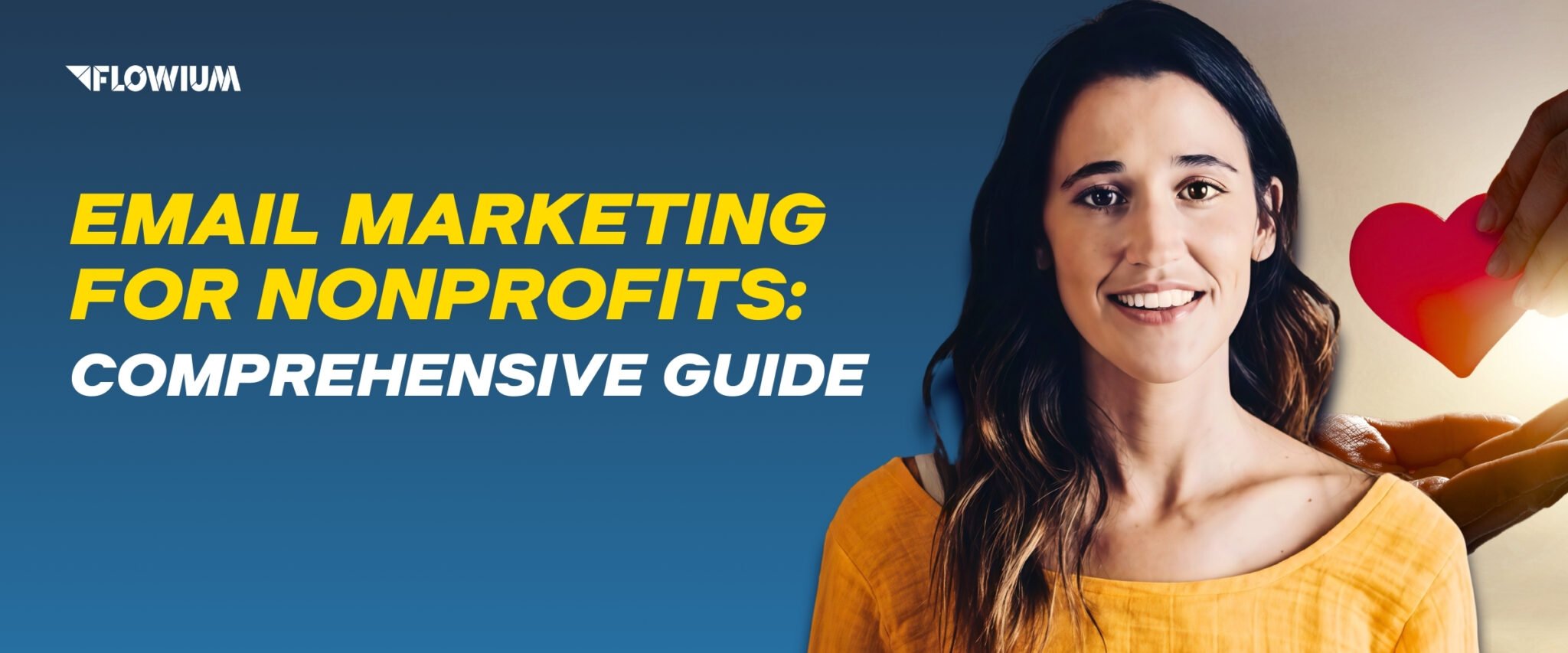Nowadays, personalization is a standard component of every marketing strategy. Both large and small brands now practice gathering personal data about their clientele to be able to create more tailored approaches. Therefore, business owners and marketers must leverage that data and make the effort to present content that is relevant to consumers.
This is also true for email, where send-to-all newsletters are no longer effective. Keep sending them, and you’ll likely see high rates of unsubscribing and little to no conversions and revenue. The key solution to this issue is email personalization. In this guide, we’ll share the best tips on how to personalize emails to make them interesting and relevant to your audience.
What is Email Personalization?
Email personalization is a marketing tactic used by companies and professional marketers to provide their audience with material that is tailored to their user’s location in the customer journey, recent website activity, and recently purchased items.
Personalized emails provide subscribers with a more tailored experience by using email automation and customer data to guide them through the customer journey.
When we discuss personalization, we refer to two distinct aspects. Consequently, you are personalizing both the content and the customer journey.
- Personalized email content
Examples of in-content personalization include adding the user’s name, adjusting the copy based on their location, and changing colors according to their past interactions on our site. This serves as a strong foundation for personalization and offers excellent testing opportunities that can significantly influence top-of-funnel metrics.
- Personalized customer journey
Tailoring the journey involves using a more individualized marketing strategy. Only those who genuinely want to hear from your brand should be contacted. Effectively segmenting and personalizing communications means using the appropriate channel to deliver the right message to the right person at the right time. Customers need to know about this new product, so it’s shifting away from the “tell our entire list that we just launched a new product” approach.
To enable both types of personalization, you need to consider all the information you get about users, including the stuff they interact with, the things their friends enjoy, their location, and their activities within your platform. Use all of this information to make well-informed choices regarding the content you offer them and the tasks you want of them. It must be a really pertinent statement that addresses them directly.
Above all, goal-focused customization is more than merely enhancing the effectiveness of a single campaign. It is a cohesive, multi-channel, customized marketing strategy. It’s not a simple strategy you use to increase the open rate.
What to Personalize in Email
With strategies ranging from basic to advanced, you can customize nearly every aspect of your email marketing campaigns. To help you grasp the range of options, we will go over each of these campaign elements.
- Subject line
Subject line personalization increases email opening rates by 26%. This can be accomplished by including the recipient’s name in the subject line or by crafting a particularly pertinent or timely message. The subject line, the second most obvious component of an unopened email, appears immediately after the “from” name. Subject lines typically include bolded type, which highlights them as a crucial component. This is because subject lines have a big impact on whether an email gets opened. However, how can you compete with other emails that have identical subject lines? Of course, personalize them.
- CTAs
Smart CTAs, or personalized calls to action, are directed at specific people rather than everyone at once. When used properly, they can convert 202% more successfully than standard calls to action.
- “To” name
Using the recipient’s name in the “To” column is sometimes all that is required. The “To” field and the opening greeting of the email are two places you should unquestionably do this.
- Email content
You can quickly tailor the copy in your email campaigns if you have your subscribers’ initial name, company, or even clothes size saved in your email list. Addressing clients’ interests and preferences directly can instantly make your emails more personalized.
- Images
Tailored visual elements also add to the overall concept of content personalization. It is another frequently disregarded component that can be customized to appeal to particular subscribers and increase click-through rates.
Starting with basic strategies and gradually progressing to more complex ones is totally feasible. The secret is to enhance your consumers’ experiences by using personalization in both significant and minor ways.
Benefits of Personalized Emails
- Boosts open rates
To boost open rates, you can personalize your subject line in addition to the body of your emails. Because they stand out in the recipient’s inbox and readily grab their attention, personalized emails with unique subject lines have a higher open rate.
- Increases interaction with customers
More individuals are opening, reading, and acting upon personalized email campaigns than generic ones, according to their higher engagement rates. Personalized emails provide you with more chances to convert because they make it more likely that someone will click on a link to your website.
- Enhances the development of relationships
Consumers desire a more customized brand experience. Running a business doesn’t allow you to meet with every customer face-to-face, but email personalization can be useful. Emails can still seem personal to clients even if you’re sending them an identical offer or information, which can help you build stronger relationships with them.
- Increases sales
The goal of email marketing is to increase income and sales. By increasing open rates and engagement, personalizing emails increases the likelihood that consumers will click a link back to your website, increasing your chances of converting subscribers into paying customers. Customers will also be more inclined to buy your goods and services since they feel more connected to the company, thanks to the relationships you can create with targeted email campaigns.
Email Marketing Personalization Statistics
Zembula’s 2024 report shows that all the listed benefits of personalization in email marketing can be backed by statistics. Here are some of the significant numbers.
- A majority of customers — more than 60% — state that they will no longer purchase from businesses that fail to employ personalization tactics.
- Compared to generic, non-personalized emails, personalized emails have been demonstrated to generate six times as many transactions.
- According to data, businesses that spend money on email outreach personalization make 40% more than their rivals.
- For both B2C and B2B organizations, tailored offers and customized email text are among the most significant indicators of email marketing success.
- If a brand’s emails aren’t personalized, more than half of customers say they’ll look elsewhere to find the good or service they desire.
- The rate of click-through is 14% higher for personalized emails.
- With a 29% greater rate of opens than non-personalized emails, personalized emails also increase open rates.
- Conversion rates for personalized calls to action are 42% higher than those for standard CTAs.
- Research indicates that 63% of customers will no longer purchase from companies that don’t employ successful customization techniques.
- After receiving a customized abandoned cart reminder, an additional 60% of customers come back to complete their transaction.
Email Personalization Best Practices
Let’s examine the best practices for journey and in-content personalization as a basic framework for enhancing both customer experience and your marketing strategy.
Gather Customer Data
Making the most of user data is essential in the era of digital marketing to provide individualized and accurate experiences. By obtaining these useful insights, you can adjust your messages, offers, and relations to precisely suit the requirements and tastes of your clients.
Don’t know where you should start? Include this process as a part of your list building strategy.
- Collect pertinent user information from social media, mobile apps, and websites. Demographics, click-throughs, purchases, and preferences can all be included.
- Create thorough client profiles to get to know each individual.
- To explore the data you have collected, use analytics tools. You can predict what customers might desire next by using machine learning and predictive analytics to find trends and patterns. Many advanced email marketing platforms like Klaviyo offer such features to facilitate data gathering and processing.
Then, you can use the data to tailor your marketing campaigns.
Segment Your Audience
Finding out more about your audience is just the first step to achieving effective personalized email marketing. Divide your audience into several segments and modify your promotions to appeal to their preferences. This will increase interaction and improve the efficacy of your marketing campaigns. You can do it according to personal characteristics, such as:
- location;
- gender;
- age;
- purchase history;
- activities and interaction with your brand;
- hobbies, etc.
All this should be done even before you start creating personalized email campaigns to accomplish more targeted email marketing that yields superior outcomes. For better results, use advanced practices such as RFM segmentation.
Example:
Sending a customized offer or discount immediately to a segment of customers who abandoned their carts has a higher conversion rate than sending a generic email.
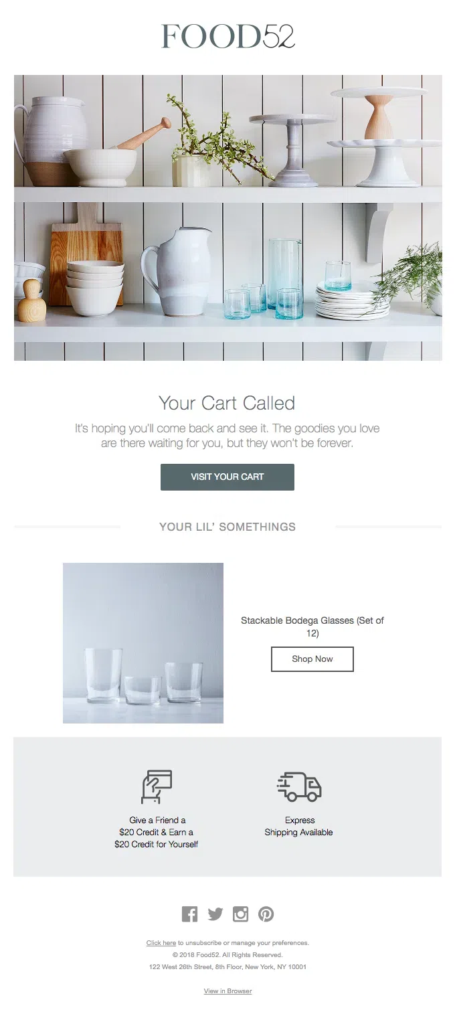
Use Automated Personalized Emails
Automation might help if you want to simplify audience segmentation. A customer relationship management platform, for instance, can be used to automatically group customers together according to the actions they have performed on your website.
You can also use automation tools and features of your email marketing software to set up triggered emails that will depend on client behavior and engagement.
Based on a number of behavioral triggers, such as a product purchase, cart abandonment, website time, page browsing, etc., you can tailor the customer experience and interactions through email.
Example:
After completing a purchase, a client receives an automatically triggered cross-sell/upsell campaign offering related products.
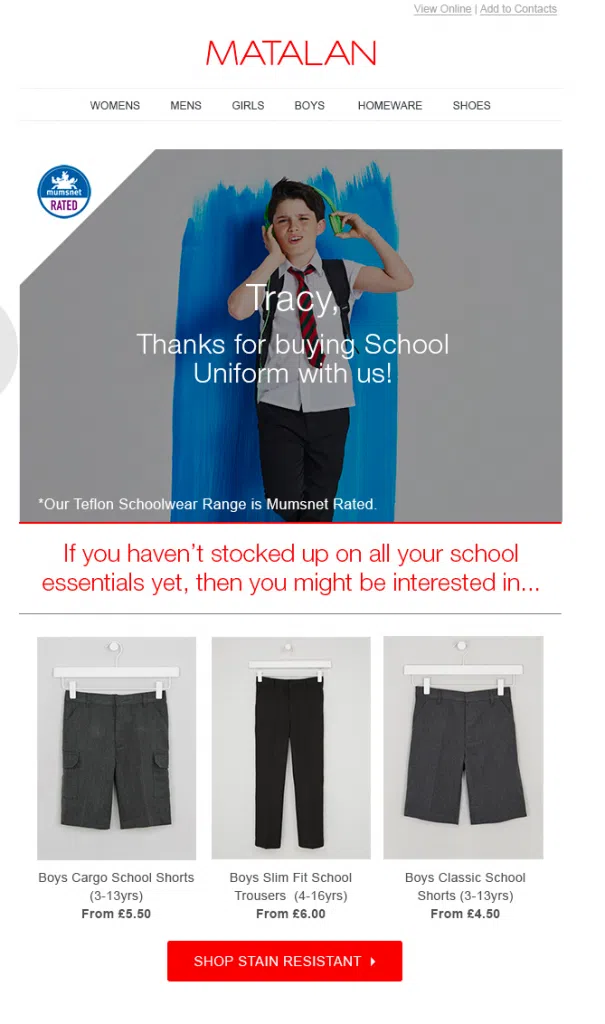
Use “From” Name Personalization
One of the most obvious things when the email reaches the recipient’s inbox is the “from” name, which is your company name. To make it easier to identify the sender before the email is opened, the majority of email platforms bold this field. Consider adding someone from your brand name to the “From” field of your emails, such as a project manager currently in charge of a specific account, to make this element even more striking.
Example:
Flowium uses a personalized “From” name when sending out our campaigns. To our clients, we also recommend using this method to add a more personal touch to their promotions and create a stronger connection with subscribers.

Use Dynamic Content
Another excellent strategy for personalizing your email is to use dynamic content. The term “dynamic content” describes automatically changing content in emails that provide customers with up-to-date information each time they open the email.
Example:
A countdown timer in a special offer email that informs customers of the number of hours left until the deal goes live, the real-time shipment position, or whether the items on their wishlist are in stock.
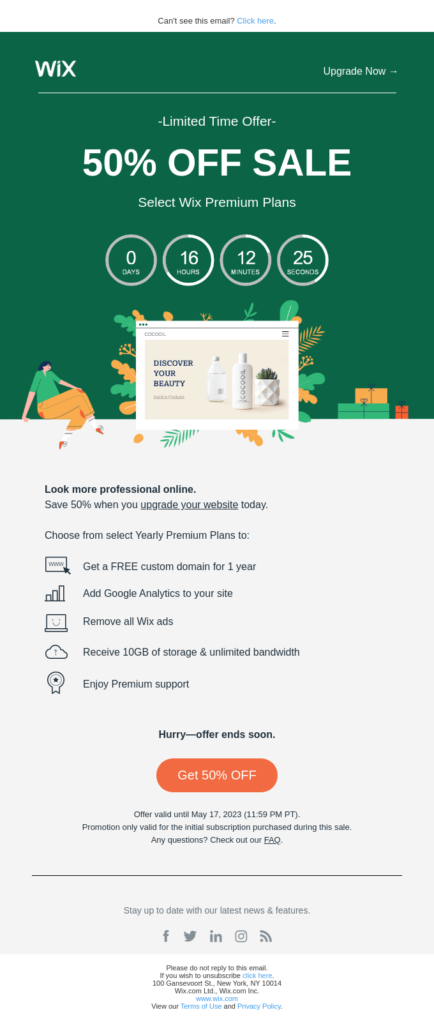
Create Relevant Content
Understanding your target audience is necessary to create personalized content. Instead of sending generic emails that can come across as overly formal, think about your brand identity and personality. For your emails to be approachable and identifiable, they should be consistent with company branding.
Personalized content, which showcases your distinct brand voice to make the experience more personalized and unique, can help you connect with your consumers in addition to adding their names to emails.
Example:
A cafe business would speak differently than a financial counselor, for instance, so always be aware of your audience and how your subscribers want you to communicate with them.
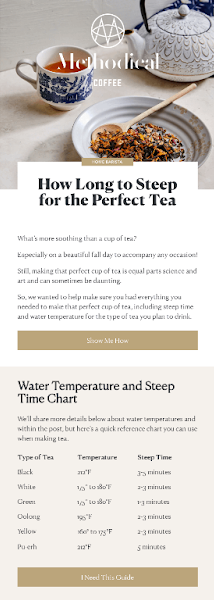
Optimize Send Time
For optimum effect, send your emails to your target audience at the ideal time. Make sure you send emails following your audience’s schedule and preferences if you’re in a different time zone.
The addressee may not be able to respond to an email if it is sent too early. The recipient can completely miss the email if it arrives at the wrong moment.
For optimal campaign scheduling, use a marketing automation solution. To determine a winning time, use the dashboard’s statistics to view the open rates at various hours.
You should know when emails receive the most engagement based on your subscribers’ email history.
Example:
As a part of your post-purchase strategy, send a review request email, timing it with the product delivery date.
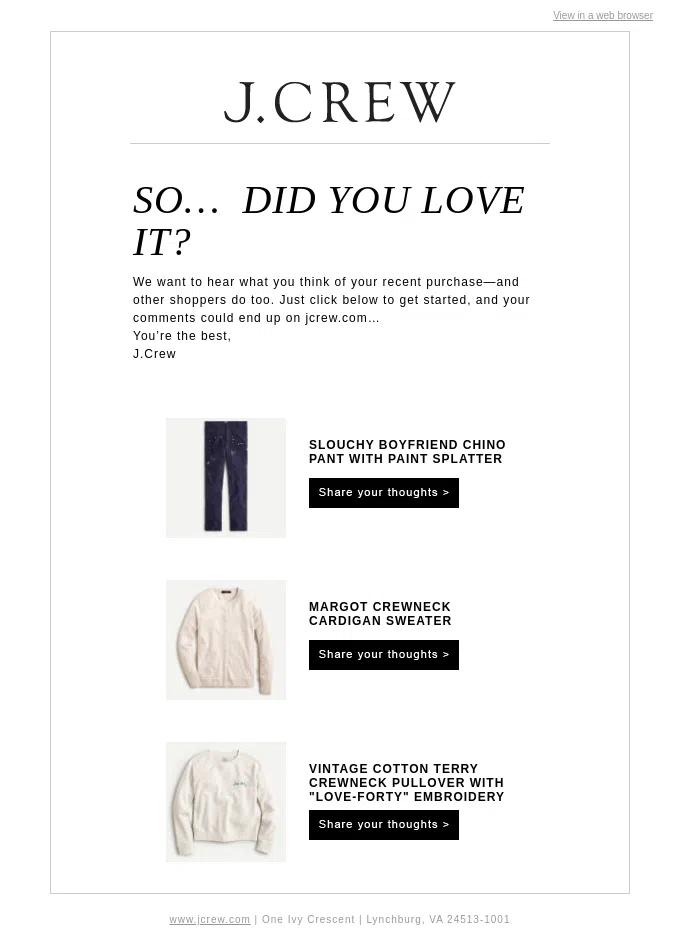
Send Personalized Emails for Re-engagement
When re-engaging clients who have previously interacted with your business but have not done so recently, personalization can be quite helpful.
Sending a re-engagement campaign to inactive subscribers who haven’t interacted for a predetermined amount of time will help you do this. Depending on what has worked in the past, you may just tell them they’ve been overlooked, give them a coupon code as a reward, or show them new items that are relevant to their previous purchases and might pique their interest.
However, since it may be your last chance to win back those clients, make sure the email is engaging and tailored to the individual.
Example:
Brands can set up a personalized winback campaign to encourage clients to engage and make deals with them again. The most effective strategies here are using exclusive incentives and timely offers that directly address clients’ needs and preferences.
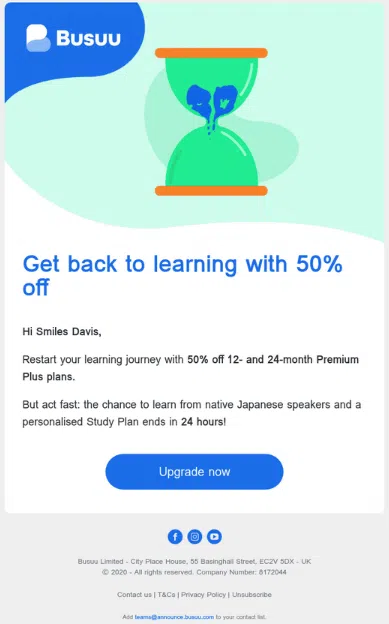
Send Time-Sensitive Emails
Anniversary emails draw attention to a certain day that is important to the client, the brand, or both. The most typical ones are:
- Anniversaries;
- Birthdays;
- Holidays.
Expressing gratitude to the consumer or happiness about the occasion is the primary goal of anniversary emails. These emails frequently include a promotion as well, such as a discount code or offer.
Example:
Based on the available information about a subscriber, send a personalized email campaign before or on the day of their birthday featuring special offers, gift cards, and products they might be interested in. Modern ESPs allow automating these types of messages.
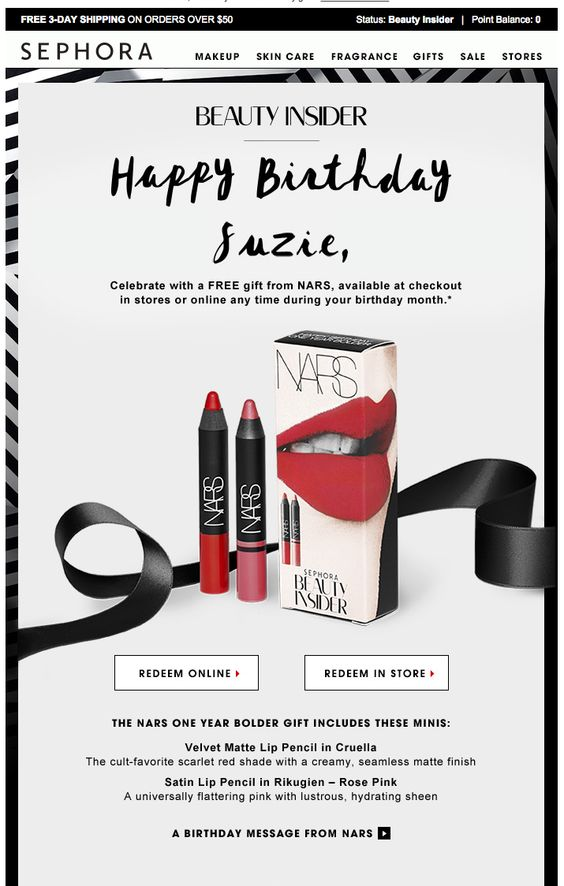
Send Product Recommendations
You can readily obtain a wealth of useful information from a customer’s previous purchases. Use it to generate tailored product suggestions that your subscribers will want to click on.
Cross-selling is possible if the purchase was made recently. For example, if the customer has purchased a smartphone from your business, provide matching headphones. If it occurred more recently, you could also offer an upgraded version of the same product as an upsell.
Personalize Offers for VIP Customers
If your consumer is a VIP through: Personalization can also be based on their status.
spending more money on individual orders; purchasing more frequently than other clients;
and/or buy without any savings.
Since they generate the largest portion of revenue on their own, this customer segment merits the greatest attention and, naturally, individualized material. This strategy guarantees that your VIP clients remain that way and feel valued.
Example:
Present exclusive Black Friday deals for your VIP segment, accentuating the opportunities and benefits of their VIP pass/membership.

Test and Analyze
The ideal way to find out which aspect of your campaign best achieves your objective is through A/B testing. Using A and B versions of the identical email copy, A/B testing entails dividing your email readers into two divisions.
You can send two variations, for example, one with an image and one without. This will assist you in figuring out which email design gets the most clicks and opens.
Experimentation helps avoid human bias and enhance subsequent efforts for better outcomes, such as increased open rates, click-throughs, etc. It also assists you in determining the most effective ways to engage your audience.
Collect Feedback
Who has the best idea of what your clients desire? Your clients! For this reason, you should use surveys to get input.
Get a true understanding of your clients’ tastes, interests, and expectations by asking them directly what kind of content they would want to see. By demonstrating to your audience that you appreciate their opinions and are dedicated to serving their needs, you can better customize your marketing campaigns and build stronger relationships with them.
Think about including interactive components, such as a rating scale, straight in your emails to streamline the procedure and promote a more robust feedback loop.
Example:
To get more information about client preferences and experience with your brand, ask your audience to take a survey or choose other means to collect feedback. Make it simple to understand and quick. To encourage subscribers to engage, offer small incentives, e.g., promo code or bonus points.
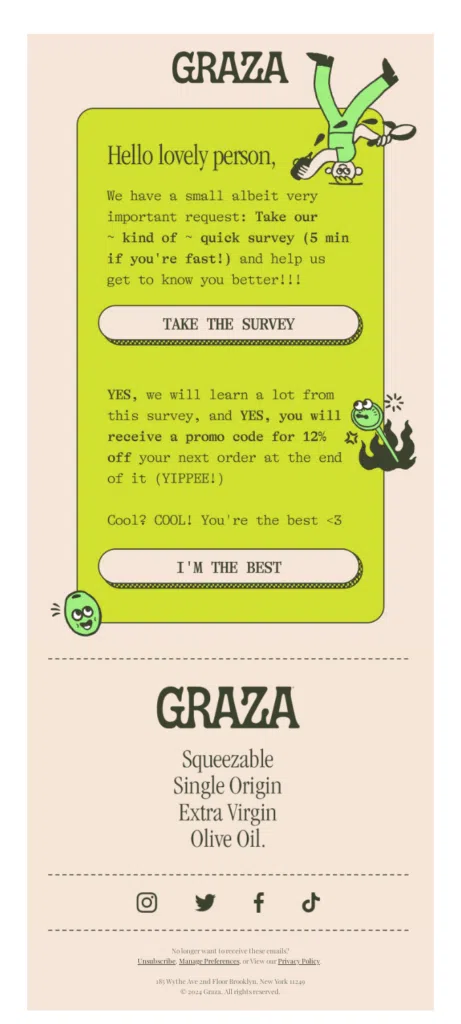
Typical Email Personalization Mistakes to Avoid
When trying to set up personalization for your marketing, it’s rather easy to overdo it and make mistakes. Here, we’ll share a brief list of what your company should avoid to make it work effectively.
- Overpersonalization
It is critical to strike the appropriate balance between personalized and generic material. Giving recipients too many personal facts can come across as invasive or unsettling, which could harm the brand’s reputation.
- Poor Data Validation
You must ensure that the personalization data is accurate and up to date. Inaccurate information in personalized emails can damage the brand’s reputation and have a detrimental effect on the recipient’s experience.
- Ignoring User Preferences
Disregarding user choices can easily drive away recipients. Companies should honor their subscribers’ choices and give them the ability to alter the kind and volume of emails they receive. Higher unsubscribe rates and a decline in trust can result from ignoring these preferences.
More Personalized Email Examples
To give you some more inspiration and examples of practical use of email marketing personalization, let’s look at its successful implementation by real brands.
Personalized Email Example from Lume
Subject Line: Upcoming shipment on ____ (+VIP Prices for Soap)
This is a great example of a highly personalized post-purchase email that directly addresses the client and uses the best practices that we mentioned above. Starting from the subject line customization, it delivers unique to the order information about shipment. The copy also includes such important tailored components as the client’s name, order details, and options for delivery process optimization. The brand’s marketers also utilize top-notch tactics for VIPs and relevant product recommendations. Overall, this email is a great simple of how to properly personalize emails of this type.

Cart Abandonment Email Personalization Example
Subject Line: We noticed you checking us out… 👀
To reach the goals of your cart abandonment campaign, it’s important to make it relevant and highly personalized. In this email example by Pulp&Press, we can see the use of popular strategies that make it effective. While it doesn’t use addressing by the name, the copy still expresses an individual approach by featuring a creative description of a product that was abandoned in the cart and directs attention to user actions. The campaign also includes tailored product recommendations in the section called “You might also like”.

Thank-You Email Personalization Example by Buoy
Subject Line: Smiles Davis, we got you something 💌
This brand sent a great example of a personalized email campaign design to thank a subscriber for their review. Such a message is not just a part of their personalization strategy but also the brand’s loyalty program, which offers bonus points for engaging with the previous feedback request email. Apart from starting their campaign with the name in both the subject line and copy, the brand’s marketers present a unique gift and promotions tailored to the subscriber’s engagement history. Together with the creative copy and pertinent content, this example shows a great use of the best personalization strategies.

Personalize Emails with Flowium for Better Sales
Sending your audience a personalized email can strengthen your bonds with customers and increase sales. Compared to normal email marketing techniques alone, email personalization is more effective, enabling you to engage with clients and enhance your approach.
If you need professional assistance with designing customized emails to target particular audience segments and improve your relationships, contact our team. Flowium is a qualified email marketing agency that masterfully uses all the best strategies and tools for highly effective campaigns that yield revenue.
